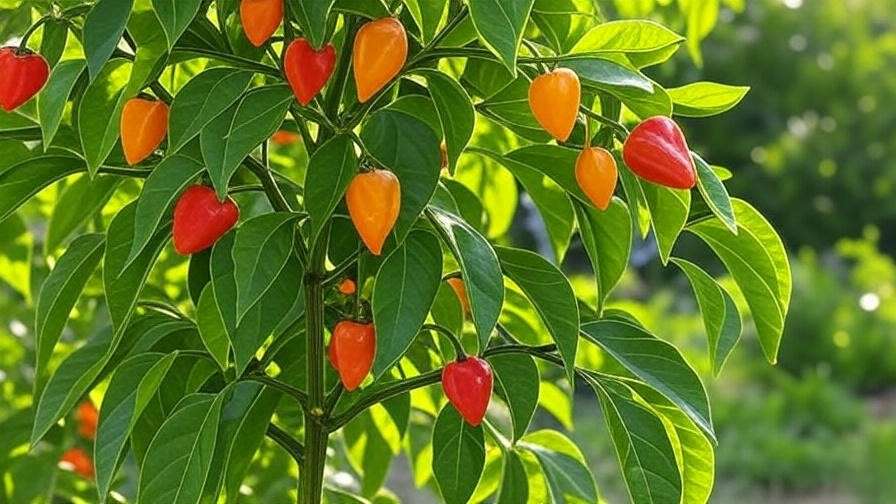Imagine biting into a fiery, homegrown habanero pepper, its vibrant heat igniting your taste buds with a burst of flavor you cultivated yourself! 🌟 Growing a habanero tree is a rewarding adventure for spice lovers and gardeners alike, offering not just a bountiful harvest but also a stunning addition to your garden or patio. Whether you’re a beginner or a seasoned grower, this comprehensive guide will equip you with expert-backed tips to nurture a thriving habanero tree. From planting to harvesting, we’ll cover everything you need to know to ensure spicy success, addressing common challenges and unlocking the secrets to a flourishing pepper plant. Let’s dive into the world of habanero trees and transform your garden into a hotspot of flavor! 🔥
1. Understanding the Habanero Tree 🌿
1.1 What Is a Habanero Tree? 🌶️
A habanero tree, scientifically known as Capsicum chinense, is a perennial shrub native to Central and South America, though it’s often grown as an annual in cooler climates. Renowned for its intense heat—ranging from 100,000 to 350,000 Scoville Heat Units—habaneros are a staple in spicy cuisines, from Mexican salsas to Caribbean jerk dishes. These compact plants, typically 2–4 feet tall, produce glossy, wrinkled fruits in vibrant hues like green, orange, red, and even chocolate-brown. Popular varieties include Red Savina, Scotch Bonnet, and Orange Habanero, each with distinct flavors and heat levels.
Habaneros have deep cultural roots, celebrated in culinary traditions for their bold spice and fruity undertones. According to Dr. Maria Gonzalez, a horticulturist at the University of Florida’s Agricultural Extension, “Habanero trees are not just plants; they’re a cultural bridge, connecting gardeners to centuries-old traditions of spice cultivation.”
1.2 Why Grow a Habanero Tree? 🔥
Growing a habanero tree offers a trifecta of benefits: culinary versatility, health perks, and aesthetic appeal. Their fiery fruits elevate dishes like hot sauces, salsas, and marinades, while capsaicin, the compound responsible for their heat, boasts anti-inflammatory and metabolism-boosting properties. Beyond the kitchen, habanero trees are ornamental gems, with lush green foliage and colorful peppers that brighten gardens or patios.
These plants are perfect for diverse audiences: home cooks craving fresh ingredients, spice enthusiasts chasing the next heat level, or gardeners seeking low-maintenance, high-impact plants. Habaneros thrive in small spaces, making them ideal for container gardening on balconies or windowsills. As Dr. Gonzalez notes, “Their compact size and vibrant fruits make habanero trees a favorite for urban gardeners.”
2. Getting Started: Planting Your Habanero Tree 🌞
2.1 Choosing the Right Habanero Variety 🌈
Selecting the right habanero variety sets the foundation for success. Here’s a quick guide to popular types:
| Variety | Heat Level (SHU) | Color | Growth Notes |
|---|---|---|---|
| Orange Habanero | 150,000–325,000 | Green to Orange | Fast-growing, great for beginners |
| Red Savina | 350,000–577,000 | Green to Red | Intensely spicy, needs warm climate |
| Chocolate Habanero | 300,000–425,000 | Green to Brown | Rich flavor, longer ripening time |
| Scotch Bonnet | 100,000–350,000 | Green to Yellow/Red | Caribbean favorite, slightly milder |
Choose a variety based on your climate, space, and flavor preference. For instance, Orange Habanero is forgiving for beginners, while Red Savina suits thrill-seekers in warm regions.
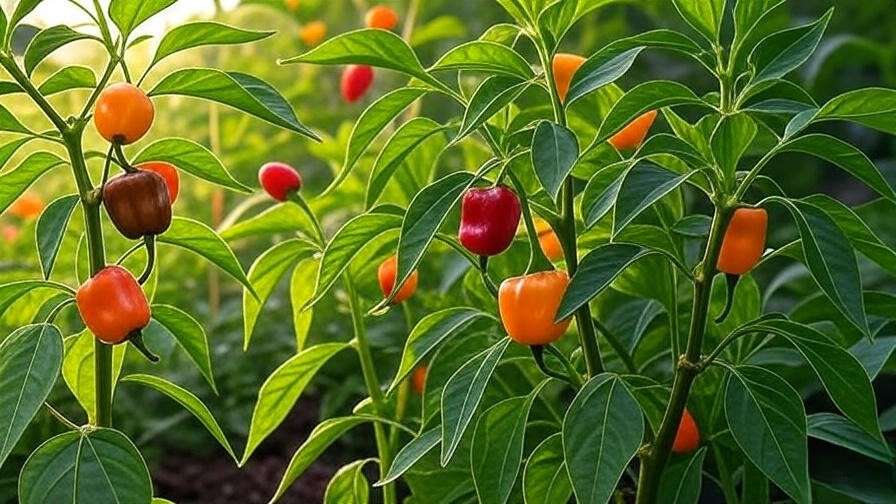
2.2 When and Where to Plant 🌍
Habanero trees thrive in warm conditions, requiring temperatures between 70–90°F and at least 6–8 hours of direct sunlight daily. Plant in spring after the last frost (typically March–May in most regions) or year-round in tropical climates. They prefer well-draining, loamy soil with a pH of 6.0–6.8, easily tested with a home soil kit.
For optimal growth, choose a sunny spot sheltered from strong winds. If you’re in a cooler climate, consider container gardening to move plants indoors during frost. “Site selection is critical,” says Dr. James Carter, a pepper cultivation expert. “Habaneros demand sun and warmth to produce those fiery fruits.”
2.3 Starting from Seeds vs. Seedlings 🌱
You can start habanero trees from seeds or nursery seedlings, each with pros and cons:
- Seeds: Affordable and offer more variety but require 8–10 weeks of indoor germination before transplanting. Soak seeds in warm water for 24 hours and plant in a seed-starting mix. Use a heat mat (80–85°F) to boost germination rates, which can take 14–21 days.
- Seedlings: Faster and less labor-intensive but may limit variety options. Purchase from a reputable nursery to ensure healthy plants.
Expert Tip: “A heat mat can increase germination success by 30%,” says Dr. Carter. “It mimics the warm, tropical conditions habaneros crave.”
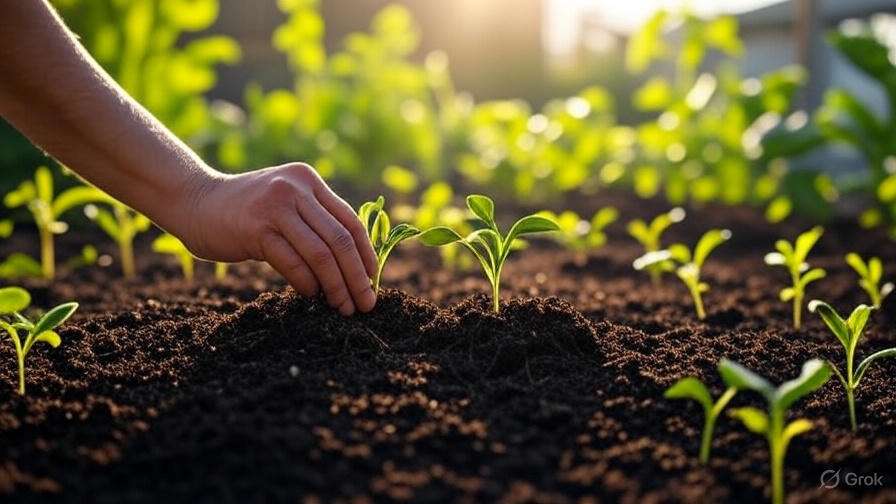
3. Essential Care Tips for a Thriving Habanero Tree 🌳
3.1 Watering and Irrigation 💧
Habanero trees need consistent moisture—about 1–2 inches of water per week—without waterlogging. Overwatering leads to root rot, while underwatering causes leaf drop. Check soil moisture by inserting a finger 1 inch deep; water if dry. For container plants, use pots with drainage holes or self-watering systems to maintain balance.
Signs to Watch:
- Overwatering: Yellowing leaves, soggy soil.
- Underwatering: Wilting, brittle leaves.
Pro Tip: Water early in the morning to reduce evaporation and fungal risks.
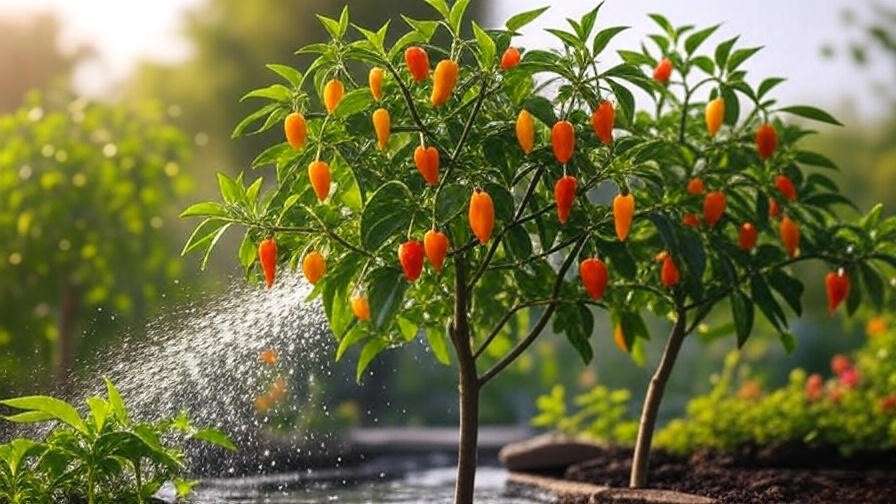
3.2 Fertilizing for Optimal Growth 🌿
Fertilize habanero trees to support vigorous growth and fruiting. During the vegetative stage (first 6–8 weeks), use a balanced 10-10-10 NPK fertilizer. Once flowering begins, switch to a low-nitrogen formula (e.g., 5-10-10) to encourage fruit development. Organic options like compost tea, fish emulsion, or bone meal work well.
Apply fertilizer every two weeks during the growing season, following package instructions to avoid overfeeding. “Balanced nutrition is key,” says Dr. Gonzalez. “Too much nitrogen leads to lush leaves but fewer peppers.”
3.3 Pruning and Support ✂️
Pruning encourages bushier growth and higher yields. Remove suckers (small shoots between branches) and lower leaves to improve air circulation and reduce disease risk. Pinch back the top growth when plants reach 12–18 inches to promote branching.
For heavy fruit loads, stake or cage plants to prevent branches from snapping. Use soft ties to secure stems without damage. “Pruning is like giving your habanero tree a haircut,” says Dr. Carter. “It shapes the plant for maximum productivity.”
4. Managing Pests and Diseases 🐛
4.1 Common Pests Affecting Habanero Trees 🕷️
Habanero trees attract pests like aphids, spider mites, and whiteflies. Here’s how to manage them:
- Aphids: Small, sap-sucking insects that cause leaf curling. Spray with neem oil or introduce ladybugs as natural predators.
- Spider Mites: Tiny pests leaving webbing on leaves. Use insecticidal soap and increase humidity.
- Whiteflies: White, winged insects under leaves. Set up yellow sticky traps or use neem oil.
Expert Insight: Entomologist Dr. Sarah Lee recommends companion planting with marigolds or basil to deter pests naturally. “These plants release compounds that repel common pepper pests,” she says.
4.2 Preventing and Treating Diseases 🦠
Habanero trees are susceptible to diseases like bacterial leaf spot, powdery mildew, and root rot. Prevent them with these practices:
- Bacterial Leaf Spot: Caused by wet foliage. Avoid overhead watering and ensure 12–18 inches of spacing between plants.
- Powdery Mildew: White coating on leaves. Apply organic fungicides like sulfur and improve air circulation.
- Root Rot: Caused by overwatering. Use well-draining soil and pots with drainage holes.
Treatment: Remove affected leaves and apply organic fungicides promptly. “Good cultural practices prevent 80% of disease issues,” says Dr. Lee.
5. Harvesting and Using Your Habaneros 🍎
5.1 When and How to Harvest 🌶️
The moment you’ve been waiting for—harvesting your habanero peppers! Habaneros are typically ready to pick 70–90 days after transplanting, depending on the variety. Look for these signs of ripeness:
- Color Change: Peppers transition from green to vibrant hues like orange, red, yellow, or brown, depending on the variety.
- Texture: Fruits should feel firm and glossy, not soft or shriveled.
- Size: Most habaneros are 1–2 inches long when mature.
To harvest, use sharp scissors or pruning shears to cut the pepper stem about ¼ inch above the fruit. Avoid pulling peppers by hand, as this can damage the plant. “Clean cuts preserve the plant’s energy for future fruiting,” says Dr. James Carter, a pepper cultivation expert.
Harvest regularly to encourage continuous production. For maximum heat, let peppers ripen fully on the plant, but if frost threatens, pick green peppers—they’ll still pack a punch and can ripen indoors.
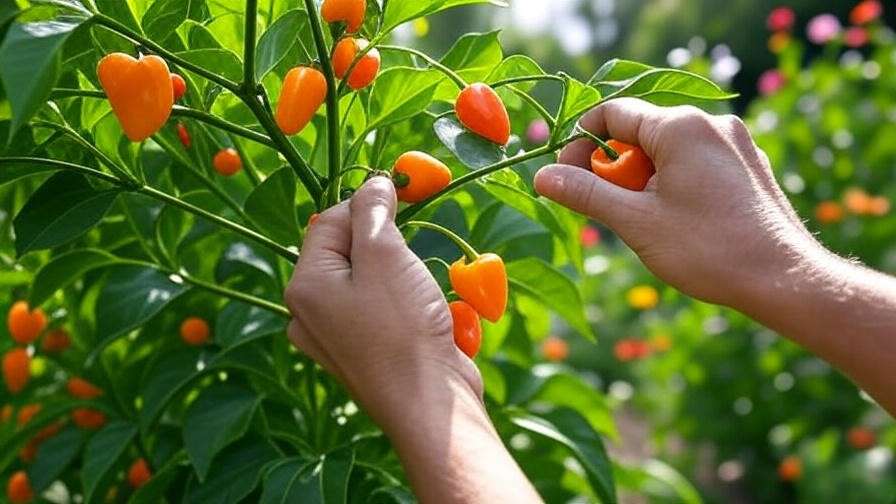
5.2 Storing and Preserving Habaneros 🥫
Fresh habaneros are a delight, but proper storage ensures you enjoy them year-round. Here’s how to store and preserve your harvest:
- Short-Term Storage: Place fresh habaneros in a perforated plastic bag in the refrigerator’s crisper drawer. They’ll stay fresh for up to 3 weeks.
- Drying: String peppers together and hang them in a warm, dry, well-ventilated area for 2–3 weeks. Alternatively, use a food dehydrator at 125°F for 8–12 hours. Store dried peppers in airtight containers.
- Freezing: Wash and dry peppers, then freeze whole in freezer bags for up to 6 months. No blanching needed!
- Hot Sauce: Transform your habaneros into a fiery condiment. Here’s a simple recipe:
Quick Habanero Hot Sauce Recipe 🌟
Ingredients:
- 10 habanero peppers (stemmed)
- 1 cup white vinegar
- 1/2 cup water
- 1 tbsp sugar
- 1 tsp salt
- 2 cloves garlic (minced)
Instructions:
- Blend all ingredients until smooth.
- Simmer in a saucepan for 10 minutes.
- Strain (optional) and pour into sterilized bottles.
- Refrigerate for up to 3 months.
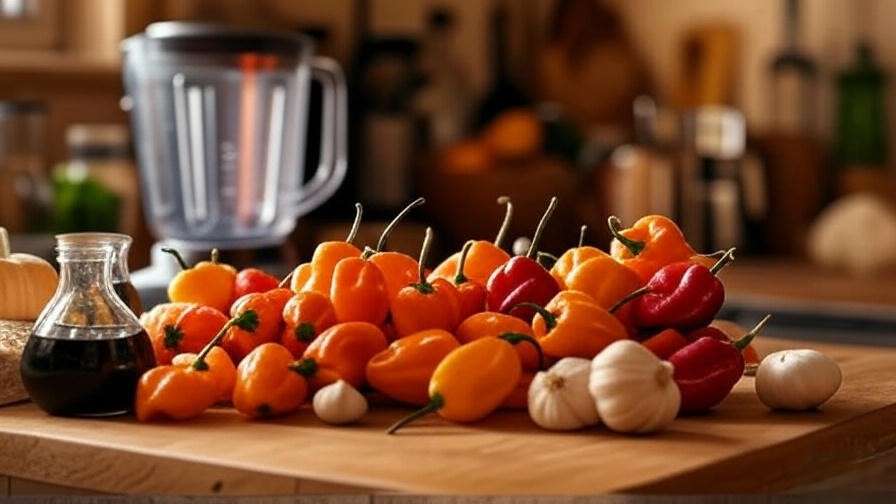
Safety Tip: Wear gloves and work in a well-ventilated area when handling habaneros to avoid capsaicin burns.
5.3 Culinary and Non-Culinary Uses 🔥
Habaneros are culinary superstars, adding heat and fruity notes to dishes. Try them in:
- Salsas: Blend with tomatoes, onions, and cilantro for a zesty dip.
- Marinades: Combine with lime juice and herbs for spicy grilled meats.
- Infused Oils: Steep dried habaneros in olive oil for a fiery drizzle.
Beyond the kitchen, habaneros have surprising uses:
- Ornamental Gardening: Their colorful fruits and lush foliage make stunning patio or garden accents.
- Pest Deterrent: Crush dried habaneros and sprinkle around plants to repel ants and rodents (use sparingly to avoid harming beneficial insects).
Safety Reminder: Capsaicin is potent. Always wear gloves, avoid touching your face, and keep habaneros away from pets and children.
6. Troubleshooting Common Habanero Tree Problems 🛠️
Even with the best care, habanero trees can face challenges. Here’s a quick-reference guide to common issues and solutions:
| Problem | Symptoms | Solutions |
|---|---|---|
| Slow Growth/No Fruit | Small plants, no flowers | Ensure 6–8 hours of sun, check soil nutrients, hand-pollinate with a brush. |
| Leaf Drop/Wilting | Drooping or falling leaves | Adjust watering (avoid over/underwatering), improve drainage, check for pests. |
| Blossom Drop | Flowers fall before fruiting | Maintain consistent temperatures (70–90°F), avoid high humidity or drought. |
| Yellowing Leaves | Leaves turn yellow, plant weakens | Test soil pH, reduce watering, apply balanced fertilizer. |
Hand-Pollination Tip: If pollinators are scarce, gently shake plants or use a small paintbrush to transfer pollen between flowers. “This can boost fruit set by 20%,” says Dr. Maria Gonzalez.
7. Advanced Tips for Maximizing Habanero Yields 🚀
Ready to take your habanero tree to the next level? Try these expert techniques:
- Overwintering: In colder climates, bring container-grown habaneros indoors before the first frost. Place in a sunny window, reduce watering, and prune back by one-third. “Overwintered plants often produce earlier the next season,” says Dr. Carter.
- Companion Planting: Grow habaneros alongside basil, marigolds, or onions to deter pests and enhance growth. Avoid planting near fennel or kohlrabi, which can stunt peppers.
- Hydroponics/Aeroponics: For faster growth and higher yields, experiment with soilless systems. Use a nutrient solution with a pH of 5.5–6.5 and ensure ample light.
Expert Insight: Pepper breeder Dr. Emily Tran says, “Hydroponic habaneros can yield up to 50% more fruit in controlled environments, perfect for urban growers.”
8. FAQs About Growing Habanero Trees ❓
Q1: How long does it take for a habanero tree to produce fruit?
A: From transplanting, habaneros typically take 70–90 days to produce ripe fruit, depending on the variety and growing conditions.
Q2: Can habanero trees grow indoors year-round?
A: Yes! Use grow lights (12–16 hours daily), maintain 70–85°F, and ensure good air circulation. Containers should have drainage holes.
Q3: What’s the best way to protect habanero trees from frost?
A: Move container plants indoors or cover garden plants with frost blankets. Harvest all peppers if frost is imminent.
Q4: Are habanero trees safe for pets or children?
A: No. Habanero peppers are toxic if ingested in large amounts and can cause skin or eye irritation. Keep plants out of reach.
Q5: How do I increase the spiciness of my habaneros?
A: Stress the plant slightly by reducing water during fruit ripening and ensuring full sun exposure. Avoid over-fertilizing with nitrogen.
9. Conclusion: Your Path to Habanero Success 🌟
Growing a thriving habanero tree is a journey of patience, care, and a touch of spice-loving passion! 🌶️ By choosing the right variety, providing optimal sunlight, water, and nutrients, and tackling pests and diseases proactively, you’ll be rewarded with a bountiful harvest of fiery peppers. Whether you’re crafting homemade hot sauce or adding flair to your garden, your habanero tree will bring joy and flavor to your life.
Ready to start? Plant your habanero tree today and share your spicy success stories in the comments below! Try our hot sauce recipe and let us know how it turns out. Happy growing! 🌱

